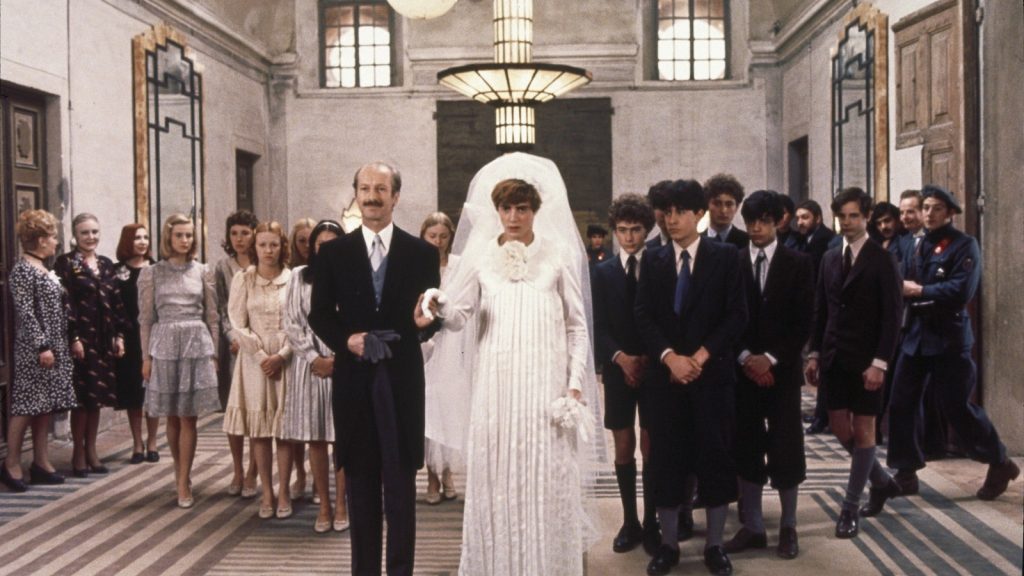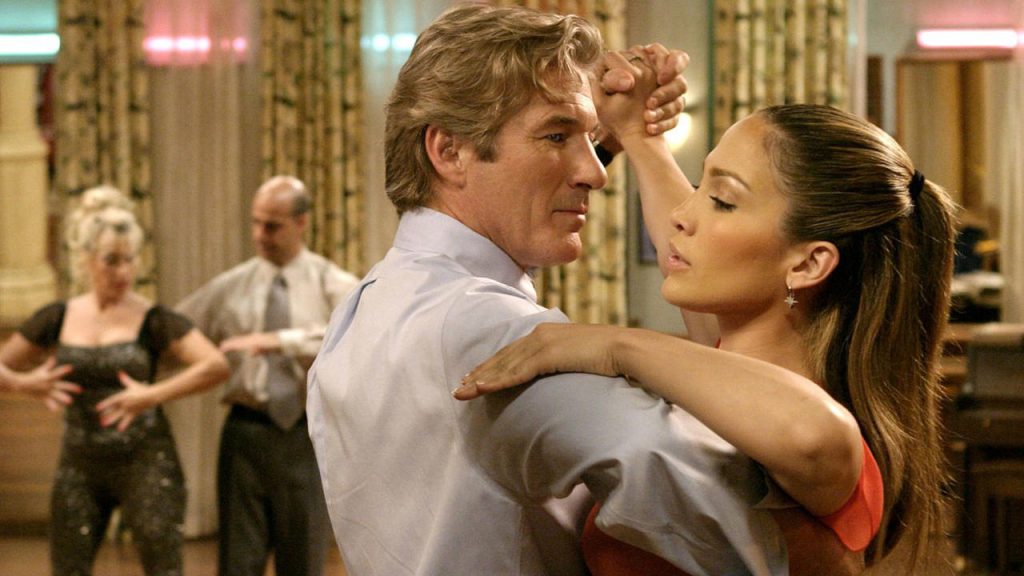In a 1994 interview with the Los Angeles Times, 18-year-old Drew Barrymore reflected on her working relationship with director Tamra Davis. “She’s easily the best director I’ve ever worked with,” she told reporter Kristine McKenna about her performance. “Anyone who gets to work with her is lucky because the scope of her talent is huge and her vision is really pure.”
Barrymore met Davis at a pivotal time in both of their careers. As the actress was transitioning from a tumultuous adolescence to what became a viable career in front of the camera, Davis was making the jump from music videos to feature films. The pair would collaborate on a series of films that played on aspects of Barrymore’s public image, making them the Sally Forrest and Ida Lupino of Saturday afternoons on TBS SuperStation.
In 1992, Barrymore’s career had gone from glossy Hollywood fare like E.T. and Firestarter to low-budget features and made-for-TV movies that traded on her reputation as a tabloid fixture. What would drive a character like Ivy from Poison Ivy or Amy Fisher to commit their unspeakable acts? Screenwriter Matthew Bright attempted to answer that question with Guncrazy, a reimagining of the 1950 noir of the same name.
Anita, Guncrazy’s 16-year-old protagonist, has led an unstable life. She lives on the poverty line in rural California, amid circumstances so dire that she shares a bed with her mother’s creepy boyfriend (Joe Dallesandro) while her mother pursues work in faraway Fresno. Anita’s snickering classmates (among them a baby-faced Jeremy Davies) drive her to vacant lots and abandoned construction sites, where they ply her with hard liquor and pressure her to have sex with them. When her social studies teacher assigns the class to write to pen pals, Anita reaches out to Howard Hickock (James Le Gros), a convict who put an ad in the local pennysaver. Howard is released on good behavior after saving a guard and Anita invites him to live in her hometown, securing him a job with a local preacher (Robert Greenberg) who runs a service station. Knowing that Howard is turned on by gun-toting women, Anita learns to shoot, eventually murdering her stepfather when he gets too handsy with her. Howard helps her bury his rotting corpse and the pair hit the road in search of her mother, robbing and murdering several other victims on their ill-fated road trip.
While the story calls back to 1940s film noir, making the femme fatale the point-of-view character gives the film a fresher feel. Unlike earlier noir protagonists, we see how powerless Anita is, and why she’s drawn to Howard. Guncrazy wouldn’t have worked as well if there wasn’t a strong performance at its center, and Barrymore is compelling and vulnerable as Anita. Her stilted line readings and tentative body language play like a teenage girl feeling out a new identity and seeing if it’s right for her. As the consequences of her actions hit her in the closing scenes, we can see dread creep across her face, and the deer-in-the-headlights facial expression in the denouement feels like a gut punch.
Barrymore fought hard for the role. In a 1993 New York Times interview, Davis recalled that the actress reached out to her for a chance to audition. “I saw her and knew she was perfect,” she said. “You could see she’s been through a lot, and the world has not been easy to her. And yet she has this incredible vulnerability.”
The risk paid off for both Barrymore and—in the short run—for Davis. After Guncrazy premiered on Showtime in 1992, Barrymore won a Golden Globe for Best Actress. Its modest success on broadcast TV and in a short theatrical run led Davis to what would have been her follow-up: a feminist western called Bad Girls, in which she cast Barrymore as a rebellious saloon girl.
This reunion was, ultimately, not meant to be. Davis was given a low budget and little time to prepare, and after nine days of shooting the producers fired her and replaced her with journeyman director Jonathan Kaplan. Rumors that Barrymore threatened to quit as a show of solidarity with Davis have made their way to Bad Girls’ IMDb page, and the actress has since suggested that the film isn’t her favorite work. Davis would go on to direct the rap satire CB4, while Barrymore would appear in high-profile features like Boys on the Side and Scream.

Five years later, Barrymore and Davis would reunite on Best Men, a slapstick heist movie that follows ex-con Jesse (Luke Wilson) and his ne’er-do-well buddies as they’re embroiled in a bank robbery on his wedding day. Like Guncrazy, Best Men focuses on criminal characters living in rural Kern County, California, but the faster pace and larger production values show how Davis had grown as a filmmaker. It’s also very much in conversation with late 1990s indie filmmaking; quirky details—like the bank robber’s habit of reciting Shakespeare as he commits his crimes—and moments of deadpan humor and laconic sincerity suggest that Davis had seen Bottle Rocket at least once before production began.
By 1997, Barrymore’s public image had shifted from tabloid fixture to flower-child pinup, and her introductory scene in Best Men plays with this aspect of her persona. We first see her character Hope, who has been waiting at the altar for Jesse, as she disrupts the bank robbery in progress in pursuit of her fiance. Dressed in a diaphanous wedding gown and flower crown, Hope makes a beeline for Jesse and breathlessly asks him “are you okay?” When he answers in the affirmative, she sucker-punches him in the jaw. Throughout the film, Barrymore skillfully balances Hope’s skepticism towards Jesse’s ability to stay away from a life of crime with the love she feels towards her groom and her cautious optimism about their future. In an early scene, the couple sits in the office while the robbers are taking hostages, talking about their future. Barrymore’s fast, brittle line readings show us how Jesse’s prison sentence has taken its toll on Hope, and she nails the timing of Hope’s angry, sarcastic rejoinders to Jesse’s more platitudinous dialogue.
While Davis has been able to bring out the best in Barrymore throughout their collaborations, her direction on Best Men speaks to her ability to draw credible performances from actors whose filmographies can charitably be described as inconsistent. Andy Dick’s portrayal of an expectant father whose marriage isn’t as stable as one would hope is an unpretentious career best, and Dean Cain’s role as a meathead ex-Marine with a secret brings out an appealing sense of humor that many of his performances lack. Screenwriters Art Edler Brown and Tracy Fraim open the film with a refreshingly progressive discussion of the male protagonists’ sexual fluidity, which allows the protagonists to lower their guards and be more open and honest with one another throughout the film. The four lead actors have a believable chemistry among them, giving Best Men the feel of a proto-2000s hangout movie like The Hangover.
Barrymore and Davis’s most recent collaboration on a feature film came in Skipped Parts, a coming-of-age movie from 2000. The film follows Bug Hall (Sam Callahan), a precocious 14-year-old who moves to Wyoming with his flirtatious mother (Jennifer Jason Leigh) while his grandfather (R. Lee Ermey) runs for governor in North Carolina. Bug, an aspiring writer, wants to write a book with all the parts that writers skip—like the sex scenes—kept in the text, and he begins experimenting with a similarly bookish classmate (Mischa Barton) to get more experience to put into his writing.
While Skipped Parts is competently directed, the film is a tonal mess. The subject matter goes to some dark places, such as the vaguely incestuous relationship between Bug and his mother, but Davis directs the film as though it was a more lighthearted boomer coming-of-age movie; the 1960s setting, primary-color palette, and sprightly score suggest My Dog Skip where a more David Lynch-influenced approach to the source material would have worked better. The progressive aspects of Best Men are jettisoned in favor of an abortion-fakeout subplot and a homophobic throwaway joke directed at one of Bug’s antagonistic classmates. The youthful cast members turn in thoughtful, immediate performances, but the adult actors—particularly Jennifer Jason Leigh—lapse into lazy mannerisms and rely on over-the-top accents and tacky costumes instead of their acting abilities.
Barrymore has a series of cameos as a literal manic pixie dream girl. Playing a character called “Dream Girl”, she personifies different incarnations of Bug’s idealized sexual fantasies, such as the hot nurse, the vixen, and the surfer girl. In a more interesting movie, the Dream Girl might have been able to subvert Bug’s expectations for women, and a few of the personae Barrymore takes on could have been played as metacommentary on her career as an actress and public figure. Unfortunately, her character has so little screen time and the film is so scattershot that she’s reduced to batting her eyes and earnestly flirting with Bug instead of doing any of the more engaging character work she’s done in her previous films with Davis.
Both Drew Barrymore and Tamra Davis have settled into stability in their middle age. Barrymore has charmed TV audiences and social media consumers with her eponymous talk show and endearing TikToks, and Davis has transitioned from feature films to TV shows and the occasional documentary. With Davis returning to narrative film direction for the first time in 20 years with her Netflix adaptation of 13: The Musical, the time could be right for one more collaboration between Barrymore and Davis.



